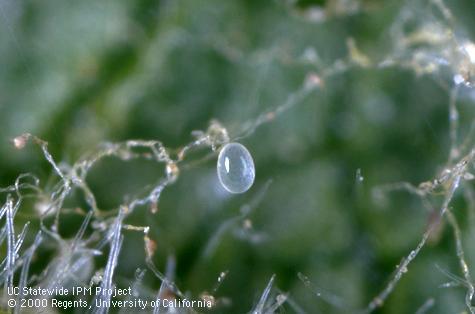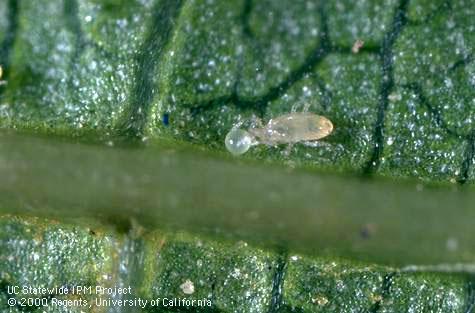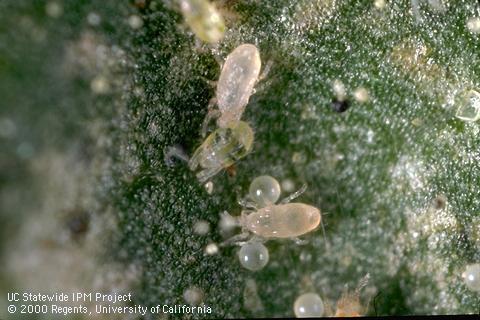


Like other mites, western predatory mites do not have antennae, segmented bodies, or wings. They pass through an egg stage, a six-legged larval stage and 2 eight-legged immature nymphal stages before becoming adults.
Western predatory mites are about the size of twospotted spider mites, but lack spots, range in color from cream to amber red (depending on what they just recently consumed), and are shinier and more pear-shaped than their prey. The shiny, oval eggs of the western predatory mite are larger than spider mite eggs. In addition, predatory mites are more active than pest mites, only stopping to feed. Under magnification the mouthparts of predatory mites can be seen extending in front of their body while pest mite mouthparts extend downward to feed on plants.
The preferred foods of western predatory mites are mites of all stages, including eggs, but they also feed on pollen and other food. The western predatory mite is commercially available and is commonly released against Tetranychus spp. spider mites such as the Pacific spider mite and the twospotted spider mite. Effective control of spider mite pests has been documented in various many crops and ornamentals. The western predatory mite tolerates hot climates as long as the relative humidity is above about 50 percent.